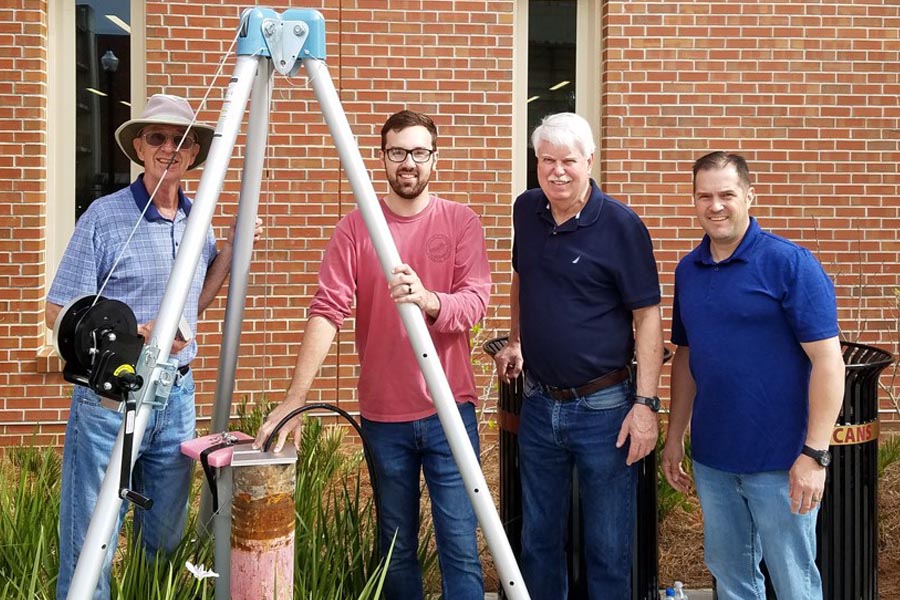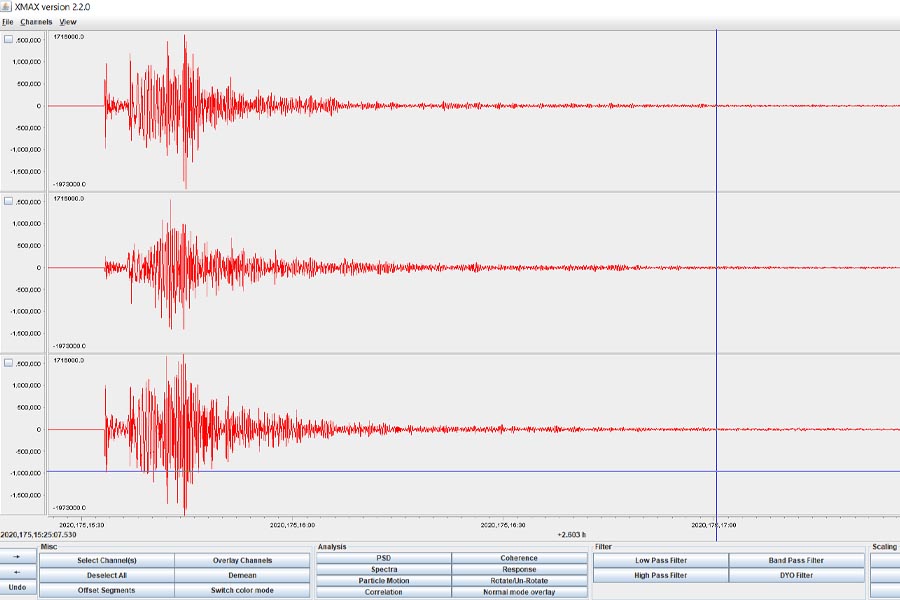
The newly installed seismometer at Florida State University’s Department of Earth, Ocean and Atmospheric Science is already helping scientists detect and analyze earthquakes around the globe.
On June 23, just before 11:30 a.m., the seismometer recorded a magnitude 7.4 earthquake in southern Mexico, centered in the state of Oaxaca. The powerful quake left at least seven people dead and damaged hundreds of buildings.
Information from the Florida State University Seismic Observatory was instrumental in supplying real-time data to the U.S. Geological Survey’s National Earthquake Information Center (NEIC) as the Oaxaca quake occurred.
The seismic observatory, which has been up and running at the university’s new EOAS building since March, uses a seismometer and data-logging system to digitize and time-tag data before sending it to various agencies, including NEIC, the Albuquerque Seismological Laboratory, and the Data Management Center at the Incorporated Research Institutions for Seismology in Seattle.
NEIC uses data from Florida State and several hundred other seismic stations in the U.S. and around the world to rapidly locate and characterize earthquakes. The information is verified by seismologists and published to the center’s website within minutes, with the goal of mitigating risks to human life.
The seismometer and data logger were a gift from Bob Hutt, a former member of the U.S. Geological Survey’s Albuquerque Seismological Laboratory.
“When I retired, my wife and I moved to Tallahassee to be close to our son and his family,” Hutt said. “I knew there were no high-quality, deeply buried seismographs in the area, so I approached the Department of Earth, Ocean and Atmospheric Science with the idea of cooperating with them on the installation. I did not want to let such a valuable seismometer just sit in my garage or try to operate it in a less than useful manner.”
The borehole seismometer is designed to be installed deep underground to avoid seismic noise near the surface, which includes everything from trees blowing in the wind to vehicle traffic. A borehole drilled next to the EOAS building allowed the seismometer to be installed in the underlying limestone bedrock approximately 140 feet below ground.
Since the installation, the Oaxaca earthquake is just one of several seismic events that the facility has detected. In late May, the seismometer picked up on a distant magnitude 5.9 earthquake as it hit the nation of Tonga in the South Pacific.
“These events demonstrate both the excellent sensitivity and the large recording range of this state-of-the-art seismograph system,” Hutt said.
EOAS officials say the system is so powerful it can pick up ground movement as low as a magnitude 5 earthquake on the other side of the planet and much smaller earthquakes at closer ranges.
Vincent Salters, the Earth, Ocean and Atmospheric Science department chair, said the seismometer fills a geographical gap in the global seismic network and provides crucial information for generating an accurate image of the Earth’s interior.
“Earthquakes allow us to obtain a picture of the inside of the Earth, much like an ultrasound allows us to see inside the body,” Salters said. “It is a vivid reminder the Earth’s interior is dynamic and impacts the surface that we live on.”
For more information on the FSU Department of Earth, Ocean and Atmospheric Science, visit eoas.fsu.edu.




